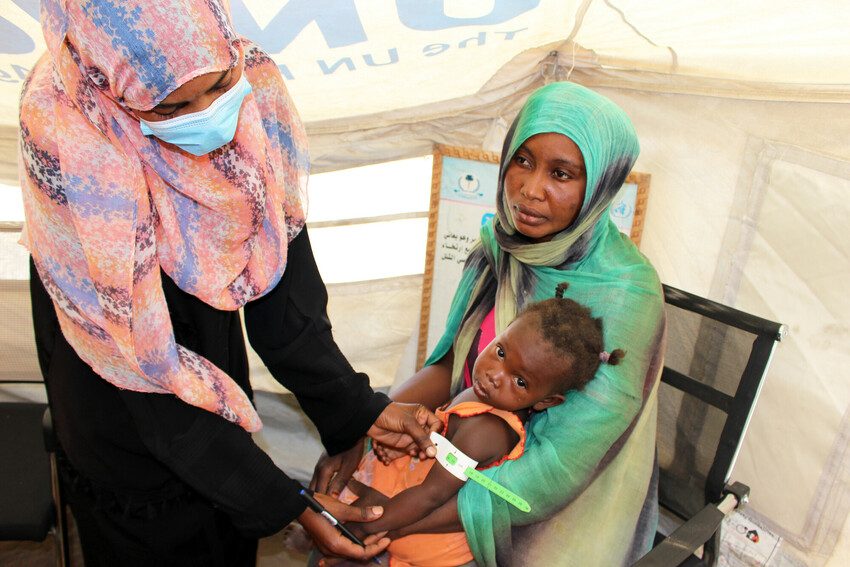Children starve as famine risk persists in Sudan
11 July 2025The international community must urgently support a peaceful resolution to the Sudan conflict which is expected to worsen the already high levels of hunger, putting millions at risk.

A baby has her arm circumference measured to check for malnutrition in Sudan. ©Plan International.
In response to the UN-backed Integrated Food Security Phase Classification (IPC) report on the situation of famine in Sudan, Plan International Sudan’s Country Director, Mohamed Kamal, says: “We are already seeing signs of mass starvation in camps where mothers arrive unable to feed their children and today’s IPC forecast is a grave warning the situation is only going to get worse. Our fears are becoming a reality.
“This is the worst hunger crisis is the world right now – the conflict is entering its third year and the IPC have warned the situation is expected to deteriorate dramatically between July and September, with children most at risk. 24.6 million people in Sudan face high levels of acute food insecurity with 8.1 million facing emergency levels.
Famine detected in 5 areas
“Famine was detected in 5 areas in El Fasher and the Western Nuba Mountains and these areas are particularly difficult to reach to provide humanitarian aid as the security situation is so severe here. With the impending rainy season due, travel will be further hindered which will also drive-up food insecurity levels in the months ahead.
“Children are starving to death from dehydration and malnutrition in Sudan every day. Hundreds of thousands are malnourished. A 10-year-old girl recently told us that for months her only meal has been lentil soup every day and that she dreams of fruit.
“This is the worst hunger crisis is the world right now. The IPC have warned the situation is expected to deteriorate dramatically with children most at risk.
Mohamed Kamal, Plan International Sudan’s Country Director
“For girls and young women, the impact is especially severe – girls often eat last and least and are at greater risk of early marriage, as families struggle to feed their children.
“The inaccessibility of safe water has led to a widespread outbreak of cholera in many parts of the country with over 32,000 suspected cases recorded this year. Cholera can be deadly for malnourished and dehydrated children.
Conflict causes risk, low food production and economic instability
“Last month we saw an attack on a joint UN humanitarian convoy in North Darfur in which aid workers were killed and life-saving food and nutrition supplies destroyed rather than reach starving families. It is getting increasingly hard to operate in the most at need regions.
“As the conflict continues, farming is disrupted and Sudan faces serious economic instability and high inflation which limits people’s access to food. This has been compounded with overseas aid cuts as community kitchens who relied on this money can no longer operate.
“This is the world’s largest humanitarian emergency and Plan Sudan continues to work across the country to provide humanitarian assistance, but the international community must urgently support a peaceful resolution to this conflict, which has been devastating the people of Sudan for over 2 years.”
Categories: Emergencies
